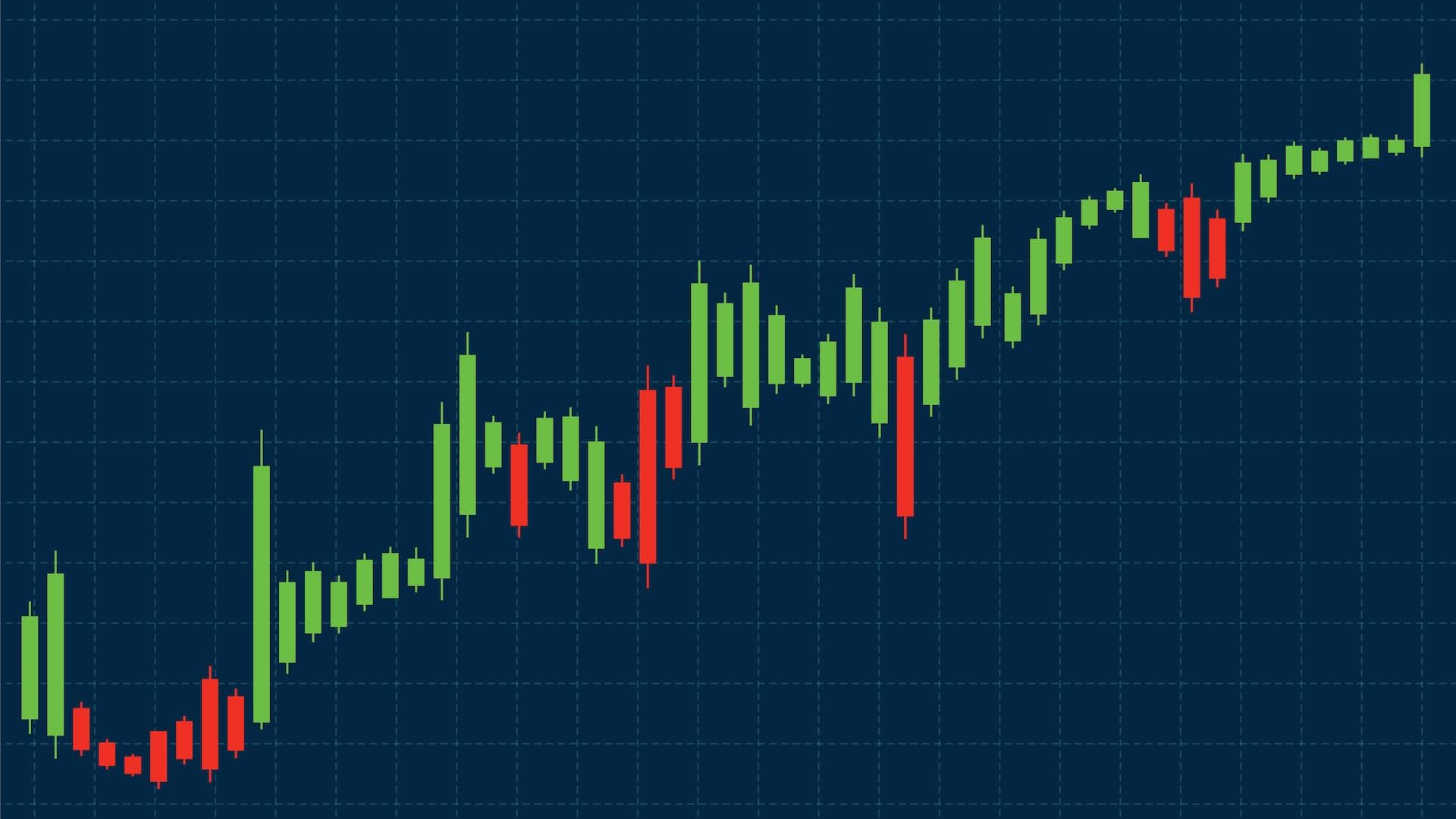A trading journal is like your personal playbook. Instead of relying on memory or gut feelings, you write down what you did and why you did it. Over time, those notes show you where you shine and where you slip up. That’s how traders turn messy guesses into clear strategies that keep improving with every trade.
Why Every Trader Needs a Trading Journal
If you trade without a journal, you end up making the same mistakes again and again. Writing things down keeps you accountable and shows you what’s really working and what’s not. It’s like having a coach by your side, pointing out when you’re taking on too much risk or when a setup actually fits your style. That’s why active traders stick to journals; they help turn scattered trades, whether in options or US stocks, into steady results.
The role of a trading journal in your trading strategy
A trading journal fits right into your strategy by recording every step, like technical indicators you used or the profit factor from each deal. You review it to tweak your approach, making sure you handle trades directly without guesswork. It keeps you accountable and helps build actionable insights for future setups.
How trading journals help track trading performance
Trading journals let you track performance by logging historical data on wins, losses, and market replays. You see patterns in your data entry, like how multiple accounts perform or why certain trades tank. This way, you spot weak spots fast and adjust to hit higher profits.
Identifying your trading edge with a journal
You identify your trading edge by analyzing journal entries on what sets you apart, like spotting market turns others miss. Review absolutely essential notes on advanced analysis to refine your style, whether day trading or long holds. Over time, it reveals your strengths, like nailing support team levels or avoiding beginner traps, for a real advantage.
Choosing the Best Trading Journal
The best trading journal is the one you’ll actually use. If you like numbers and reports, pick a detailed one. If you just want to write quick notes after each trade, keep it simple. The goal is the same: to track what you’re doing and spot patterns that help you win more often.
Features of the best trading journal
A solid journal shows when you got in, when you got out, and what happened in between. Some let you test “what if” ideas without risking money. Others give you quick answers and help you see risks in your trades. The main point is to look back and learn fast.
Digital vs. paper trading journals
Digital journals, like apps or Google Sheets, work great if you want to track lots of trades quickly. You can add tickers, run numbers, even pull insights on the fly. Paper journals are fine if you prefer writing by hand, but they’re slower when things get busy.
Journals for different asset classes
Tailor your journal to asset classes: stock traders focus on US stocks with detailed trade logs, while options traders need sections for profit factors and high-risk plays. Day traders benefit from journals that handle quick entries across various markets, ensuring you capture every detail without hassle.
Setting Up Your Trading Journal
Stocks, futures, options: all have their own needs. Stock traders might want detailed logs of US trades. Options traders often track risk and profit factors. Day traders need a setup that keeps up with fast entries and exits. Whatever you trade, make sure your journal matches your style.
Recording market data effectively
You record market data by noting down important metrics like price levels and volume at the time of each trade. This way, you see how conditions shift and adjust your approach without missing a beat.
Logging market conditions for each trade
Log market conditions by jotting notes on volatility, news events, or overall trends for every entry. It gives you a clear picture later, helping you link wins or losses to what was happening out there.
Tracking trades directly in your journal
You track trades directly by entering details like entry and exit points, position size, and reasons behind each one. This keeps everything in one spot, making reviews quick and helping you build better habits.
Incorporating technical indicators
Incorporate technical indicators by adding notes on things like moving averages or RSI readings you used. It lets you review how they played out and refine your chart studies for stronger signals next time.
Adding practice trading notes
Add practice trading notes by simulating trades in a demo account and logging lessons learned from them. This boosts your skills risk-free, so you enter real markets with more confidence and smarter strategies.
Analyzing Your Trades
You analyze your trades to spot what's working and fix what isn't, turning your journal into a powerhouse for better results. Start by reviewing past trades in detail, using a free trading journal template to organize everything neatly. This step helps you build a profitable strategy over time, as you see real patterns emerge from your data.
How to evaluate trading performance
To see how well you’re really trading, start by looking at simple numbers like your win rate and average return. A journal or even a basic spreadsheet can make this easy; just record your trades and review them later. When you check the data, you’ll notice what you’re doing right and where you keep slipping up. Over time, this shows whether your practice runs are actually paying off, and it gives you a clear idea of how to tweak your trading plan.
Using advanced analytics to improve your trading
Advanced analytics can take your trading journal to the next level. When you bring in market data, you see more than just wins and losses; you start spotting how trends, volatility, and conditions shape your results. Many platforms give you charts and visuals that make these patterns clear. It’s almost like having a coach point out the edges you didn’t notice, helping you refine your strategy with every trade.
Recognizing profitable trading patterns
You recognize profitable trading patterns by scanning your journal for repeating setups that consistently make money. Note how certain market conditions lead to wins, and use a free trading journal to track these over months. Once you identify them, incorporate risk limits to protect gains, building a more reliable profitable strategy.
Learning from losing trades
You learn from losing trades by breaking them down in your journal, asking why they went south and what to change next time. Review trade analysis sections to see if poor entry points or ignored market data played a role. This turns setbacks into lessons, improving your overall trading performance and confidence.
Tracking performance across asset classes
You track performance across asset classes by categorizing trades in your journal, from stocks to forex, to compare results side by side. Use advanced features in the best trading journal to import trades and analyze how different markets behave under similar conditions. This helps you adapt your trading plan, ensuring consistent gains no matter the asset.
Improving Your Trading Strategy
You improve your trading strategy by digging into your journal to spot what clicks and what flops, making tweaks that fit your real results. Use insights from past trades to refine your approach, like adjusting entry rules after seeing patterns in losing setups. Over time, this builds a stronger game plan that boosts your wins and cuts down on silly errors.
Adjusting trading strategy based on journal insights
You adjust your trading strategy by reviewing journal entries to see where things went off track, then tweak rules like stop-loss levels or entry criteria. Pull out actionable bits from trade analysis, such as why certain setups failed in choppy markets, and test new ideas in practice trading first. This keeps your plan fresh and aligned with how you actually perform, leading to steadier profits.
Fine-tuning your trading edge
Review past trades to sharpen what sets you apart, incorporating risk limits to protect your wins without overcomplicating things. With consistent checks, you turn small advantages into a reliable profitable strategy that stands out in crowded markets.
Integrating market data into decision-making
Import trades from your platform to cross-check with broader trends, ensuring every decision factors in real-time shifts. This habit sharpens your calls, reducing guesswork and tying your moves to solid evidence for better outcomes.
Aligning trades with market conditions
Review how past trades fared in bull versus bear phases, adjusting your trading plan to skip mismatches that lead to losses. Over time, this syncs your actions with the market's mood, boosting hit rates and confidence in tough spots.
Developing discipline through consistent tracking
Track how skipping rules led to bad trades, using a free trading journal template to stay organized and accountable. This routine builds habits that keep emotions in check, turning you into a more consistent trader who follows through on plans.
Advanced Trading Journal Techniques
Combine data from multiple sources to get a full picture, helping you spot hidden patterns fast. Serious traders use these tricks to stay ahead, treating the journal like a pro tool for ongoing growth.
Using charts and graphs for performance review
Pull trading performance metrics into tools like Excel for quick trends, like seeing drawdowns drop after strategy tweaks. This visual punch makes spotting weak areas easier, speeding up improvements in your overall game.
Incorporating trade screenshots and notes
You snap screenshots of your trades and stick them right into your free trading journal, so you can flip back through old ones super easy and see exactly what the market looked like at that moment. It's like reliving the whole thing during your reviews, which really speeds up learning from the good calls and the total flops.
Monitoring risk management and position sizing
You check back on how well you stuck to your risk limits and see if they saved your butt or caused a mess in specific trades, then tweak things based on what actually happened with your data. This way, you protect your money better and create some breathing room, letting you keep trading without those huge setbacks that knock you out.
Tracking trading psychology insights
You notice stuff like getting all tilted and making rash moves after a string of losses, then grab a trading coach app or just sit down for some honest self-talk to work through it with mental exercises. Building that kind of self-awareness over time helps you dial back the emotional reactions, turning you into someone who's way more chill and locked in when the pressure's on.
Combining journal data with technical indicators
Import market data into your best trading journal setup for backtests, revealing how indicators boosted or bombed your calls. This fusion sharpens predictions, turning raw notes into a powerhouse for spotting high-prob setups ahead.
Continuous Improvement
Continuous improvement in trading comes from looking back at what you’ve done and making small, steady adjustments. Whether you’re trading stocks or futures, your journal helps you see how those tweaks add up over time, boosting your confidence and leading to stronger results. With an easy-to-use journal app, it’s simple to spot lessons, learn from past mistakes, and turn them into smarter moves going forward.
Setting trading goals and benchmarks
Use important metrics such as R-multiple to benchmark progress, comparing actual results against what you aimed for in different strategies. This keeps you motivated, as you adjust goals based on real data to make them achievable and tied to market realities.
Reviewing and refining trading strategy regularly
Identify areas where advanced features like backtesting could sharpen your edge, incorporating chart studies to visualize weak spots. Refining means ditching bad habits and amplifying winners, ensuring your approach evolves with changing market conditions for steady growth.
Identifying trends in your trading performance
Maybe a certain setup always drags you down, or one style of trade consistently pays off. Instead of relying on gut feelings, you can check hard numbers, like your average return or R-multiple, to see if you’re improving month by month. That way, you catch problems early, build confidence from what’s working, and keep fine-tuning your strategy as the market changes.
How trading journals foster long-term growth
Trading journals help you grow over the long haul by letting you review your strategies in different assets, say futures or stocks, and pull lessons from both your wins and wipeouts. You refine your approach step by step, ditching bad habits so you don't make the same mistakes twice and waste cash. Stick with this routine, and it gradually shifts you from rookie errors to smart, pro decisions that toughen you up for any market chaos.
Using journal insights to stay ahead in the market
This forward-thinking vibe builds real confidence, keeping your trades on point and in sync with what's happening live in the markets. Over time, it gives you that extra edge, helping you outsmart the crowd and snag better opportunities as they come.












